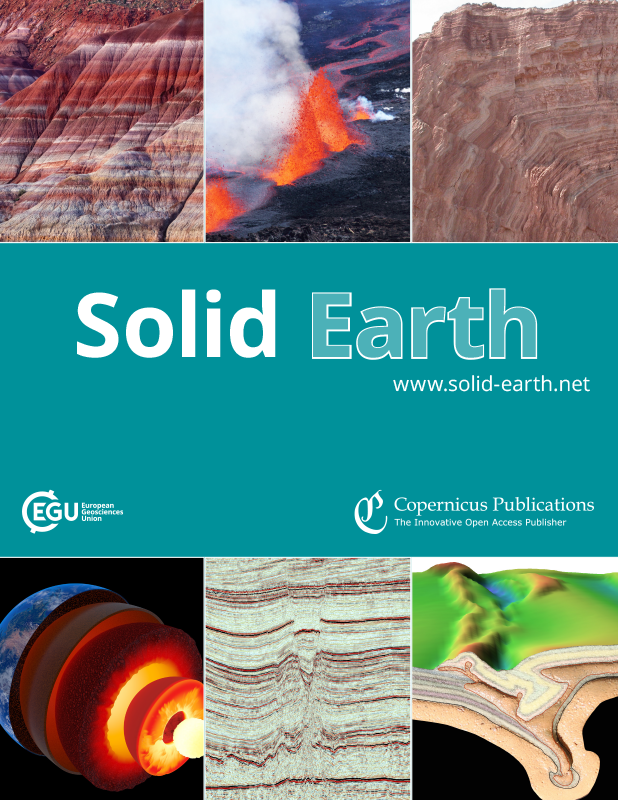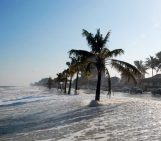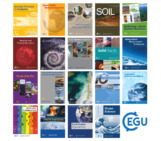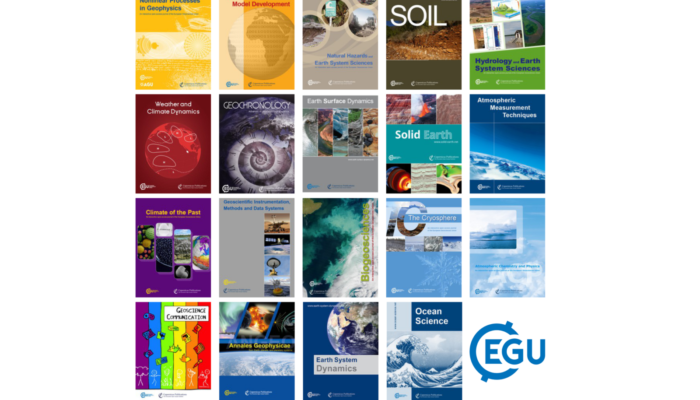
Each month we feature specific Divisions of EGU and during the monthly GeoRoundup we put the journals that publish science from those Divisions at the top of the Highlights section. During this month, we are featuring Natural Hazards (NH), Biogeosciences (BG), and Soil System Science (SSS). They are represented by the journals Geoscientific Model Development (GMD), SOIL, Natural Hazards and Earth System Sciences (NHESS), Earth Surface Dynamics (ESurf), Biogeosciences (BG), Geoscientific Instrumentation, Methods and Data Systems (GI), Nonlinear Processes in Geophysics (NPG), Solid Earth (SE), Earth System Dynamics (ESD), and Hydrology and Earth System Sciences (HESS)
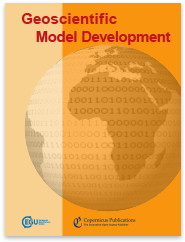 Geoscientific Model Development
Geoscientific Model Development
Applications of Machine Learning and Artificial Intelligence in Tropospheric Ozone Research – 20 November 2025
Machine learning is being more widely used across environmental and climate science. This work reviews the use of machine learning in tropospheric ozone research, focusing on three main application areas in which significant progress has been made. Common challenges in using machine learning across the three areas are highlighted, and future directions for the field are indicated.
An increase in CO2 in the atmosphere warms the climate through the greenhouse effect, but also leads to uptake of CO2 by the land and ocean. However, the warming is also expected to suppress carbon uptake. If this suppression were strong enough, it could overwhelm the uptake of carbon, leading to a runaway feedback loop causing severe global warming. We find it is possible that this runaway could be relevant in complex climate models and even at the end of the last ice age.
On 13 June 2023, a freestanding rock pillar on the Matterhorn collapsed after years of weakening. Our study examines this progressive destabilization by analyzing field data and integrating lab experiments into a hydro-mechanical model. We highlight the critical role of water infiltration into frozen rock, intensified by climate warming, as a widespread driver of the rising frequency of rockfalls in high mountain permafrost regions.
Representing soil landscapes from digital soil mapping products – helping the map to speak for itself – 21 October 2025
Soil maps are useful for many applications, e.g., hydrology, agriculture, ecology, and civil engineering. The dominant mapping method is Digital Soil Mapping (DSM), which uses training observations and machine-learning to predict per-pixel. Accuracy is assessed by statistical evaluation at known points, but soils occur in spatial patterns. We present methods for helping the map to “speak for itself” to reveal patterns of the soil landscape.
Uncovering the deep structure of the Koillismaa Layered Intrusion Complex, Finland using a novel 3D seismic survey – 20 November 2025
We acquired and processed novel 3D seismic data to reveal the hidden structure of a deep rock formation in northeastern Finland. This study uncovered a complex, layered system rather than a simple magma channel, and identified a major fault that may influence mineral deposits. Our findings offer new tools and insights for exploring valuable underground resources in hard rock environments.
A statistical study of the O2 atmospheric band aurora observed by the Swedish satellite MATS – 14 November 2025
Atmospheric Chemistry and Physics
Observed and modeled Arctic airmass transformations during warm air intrusions and cold air outbreaks – 07 November 2025
The frosty frontier: redefining the mid-latitude tropopause using the relative humidity over ice – 20 November 2025
Conflict-induced ship traffic disruptions constrain cloud sensitivity to stricter marine pollution regulations – 21 November 2025
The global importance of gas-phase peroxy radical accretion reactions for secondary organic aerosol loading – 28 November 2025
Atmospheric Measurement Techniques
The airborne chicago water isotope spectrometer: an integrated cavity output spectrometer for measurements of the HDO ∕ H2O isotopic ratio in the Asian Summer Monsoon – 12 November 2025
IASI global radiometric uncertainty budget – 13 November 2025
The TropoPause Composition TOwed Sensor Shuttle (TPC-TOSS): a new airborne dual platform approach for atmospheric composition measurements at the tropopause – 17 November 2025
An adaptable DTS-based parametric method to probe near-surface vertical temperature profiles at millimeter resolution – 20 November 2025
Automated mask generation in citizen science smartphone photos and their value for mapping plant species in drone imagery – 06 November 2025
Reviews and syntheses: Artisanal and small-scale gold mining (ASGM)-derived mercury contamination in agricultural systems: what we know and need to know – 12 November 2025
Novel oxalate-carbonate pathways identified in the tropical dry evergreen forest of Tamil Nadu, India – 20 November 2025
Including different mesozooplankton feeding strategies in a biogeochemical ocean model impacts global ocean biomass and carbon cycle – 25 November 2025
Global and regional sea-surface temperature changes over the Marine Isotopic Stage 9e and Termination IV – 03 November 2025
Holocene land cover change in North America: continental trends, regional drivers, and implications for vegetation–atmosphere feedbacks – 06 November 2026
Estimates of Atlantic meridional heat transport from spatiotemporal fusion of Argo, altimetry, and gravimetry data – 03 November 2025
Recent history and future demise of Jostedalsbreen, the largest ice cap in mainland Europe – 18 November 2025
Drivers and impacts of westerly moisture transport events in East Africa – 06 November 2025
Clear-air turbulence derived from in situ aircraft observation – a weather feature-based typology using ERA5 reanalysis – 27 November 2025
EGU in the news – November
- EGU recognizes Amir AghaKouchak for groundbreaking research on hydrologic extremes and compound hazards
- The Federal Office for the Safety of Nuclear Waste Management (BASE): Submit your abstract for the BASE session here
- Submit an abstract: LifeWatch ERIC is co-organising two interesting sessions during EGU 2026
- Human Development & Capability Association Call for Abstracts – EGU 2026 Session on Socio-Economic Vulnerability and Climate Resilience




